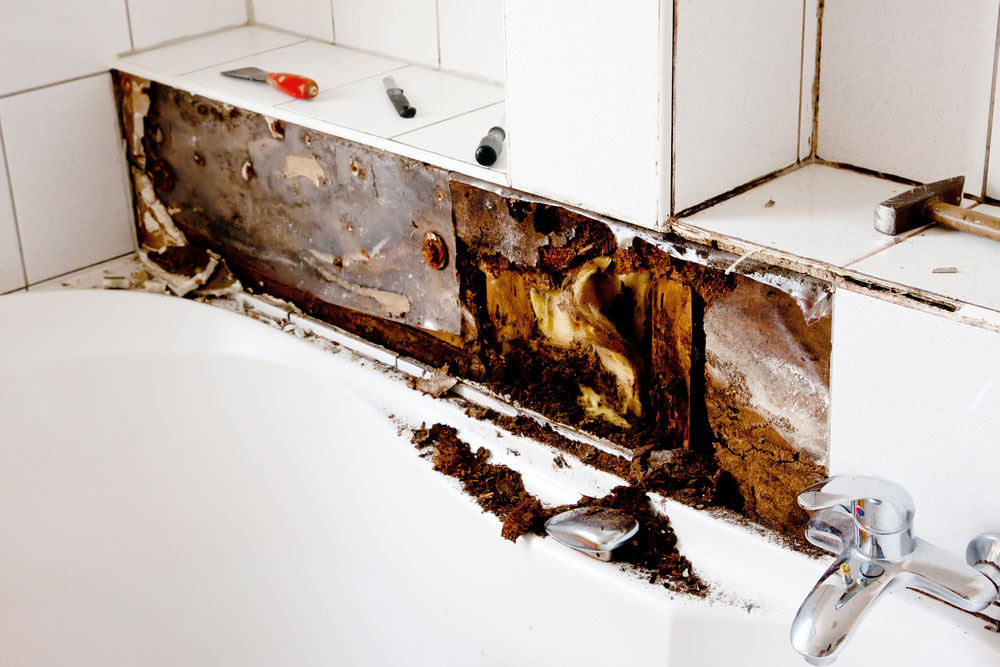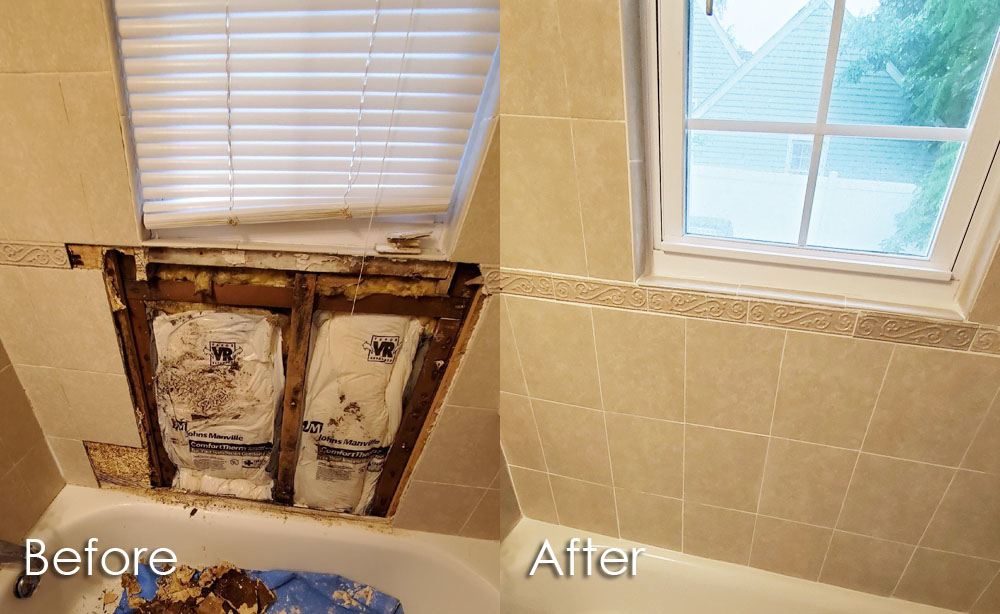Ways to Repair a Water-Damaged Wall in the Bathroom
Ways to Repair a Water-Damaged Wall in the Bathroom
Blog Article
Just how do you really feel on the subject of Looking for Signs of Water Damage in the Bathroom?

The bathroom is incredibly prone for wet buildup and potential water damage because of the constant use water in it. This article provides easy assessment strategies to aid detecting water damage risks.
The regular use water in the shower room makes it exceptionally at risk for moist accumulation and potential water damage. By examining it frequently, you can decrease water associated problems.
The adhering to collection of assessments is very easy to do and also need to be done as soon as in every 3 months in order to maintain your washroom healthy and also to stop possible water problems brought on by the tub, the shower, pipeline joints as well as plumbing, sinks, cupboards, as well as the bathroom
Do not forget executing these examinations and also be complete while executing them. Bear in mind that these basic evaluations can save you a lot of money by giving very early indicators for water damage
Sinks as well as Cabinets
Sinks and closets are revealed to wetness as well as humidity daily and also are usually forgotten. Check frequently under the sink and on the kitchen counter over it. Repair any kind of drip in the trap as it may recommend drain troubles. Browse the sink, slow draining pipelines may indicate an obstructed drain. Change sink seals if they are broken or loose.
Tub and Shower
The shower and also tub call for special attention as well as maintenance. Examine the tiles and also replace if fractured. Ensure that there is no missing grout in between the tiles. Check and change broken caulking at joints where the wall surfaces meet the flooring or the bathtub. Obstructed drains as well as pipes issues will certainly avoid the bath tub from drying and also may show serious issues under the bathtub. Seek advice from a professional promptly to prevent structural damages. Pay attention to discolorations or soft locations around the tub wall surfaces as they may show an internal leakage.
Plumbing
Signs for water damage are tough to spot given that many pipelines are installed inside the wall surfaces.
Pay unique interest to floor covering and wall surfaces moisture as well as discolorations as they may show an unnoticeable plumbing trouble. Check wetness degrees in adjoining spaces too.
The Bathroom
The commode is a vulnerable water junction. Examine the water lines and look for leakages around the toilet seat, in the pipe, and also under the water tank. If you find any kind of signs of wetness on the flooring around the toilet, check for leakages in the toilet rim and tank seals.
Know that hanging commode bowl deodorants raises the possibilities for obstructions.
How to Prevent Water Damage in Your Bathroom?
Water damage repair is an expensive, meticulous, and lengthy process. Unfortunately, bathrooms are the most susceptible rooms to water damage due to toilets, showers, and sinks. Pipes and fixtures wear out over time and are not immune to damage. But all is not lost, as there are ways to prevent water damage from occurring in your bathroom.
Check Your Plumbing
Nothing lasts forever, especially pipes, which can rust and begin leaking over time. You should periodically conduct pipe inspections and pay attention for any musty smells or water stains that may indicate you need water damage repair. Here are some things to check:
Frequently test valves for your toilet, shower, and sink to ensure they are properly working. Check faucet supply lines hidden under vanities and replace when needed. Replace cracked or deteriorating caulking along sinks, tubs, and showers. If you notice a clog in your sink, call in a professional. Since you can’t check the pipes in the wall, keep an eye out for stains, drywall bubbling, musty smells, and excess moisture; if the bathroom is on a second level, check the ceiling of the room directly below for these signs. Don’t Overwork Your Toilet
One of the most common reasons bathrooms need water damage repair is due to overflowing toilets. Save yourself the hassle of cleanup by being mindful and not pushing your toilet to extreme limits. If you have young children, it is especially important to keep an eye on them when they are in the bathroom and to teach them how to avoid clogging the toilet. Here are some more tips to help prevent your toilet from overflowing:
If you have a septic tank, only use septic-safe toilet paper Do not flush anything down the toilet besides toilet paper; items like diapers and sanitary napkins will clog the piping Pay attention to your toilet’s water level: If it’s low, it could mean it is partially clogged or that there is a crack in the toilet bowl Maintain Your Shower/Tub
Replace showers or tubs with cracks or other damage; even hairline cracks can allow water to seep in and cause damage. Grout and caulk help prevent water from seeping into walls and floors, so repair them if they are chipped, cracked, or deteriorating. Replace torn shower curtains or shower doors with seals that no longer work. Dry the floor and drain water from the tub immediately after use to prevent damage from sitting water. https://www.alure.com/home-improvements-blog/resources/how-to-prevent-water-damage-in-your-bathroom

We had been introduced to that article on How to Fix a Water Damage Bathroom through an acquaintance on a different site. Don't hesitate to take the time to distribute this write-up if you enjoyed reading it. We truly appreciate reading our article about How to Repair and Prevent Bathroom Water Damage.
Rates Report this page